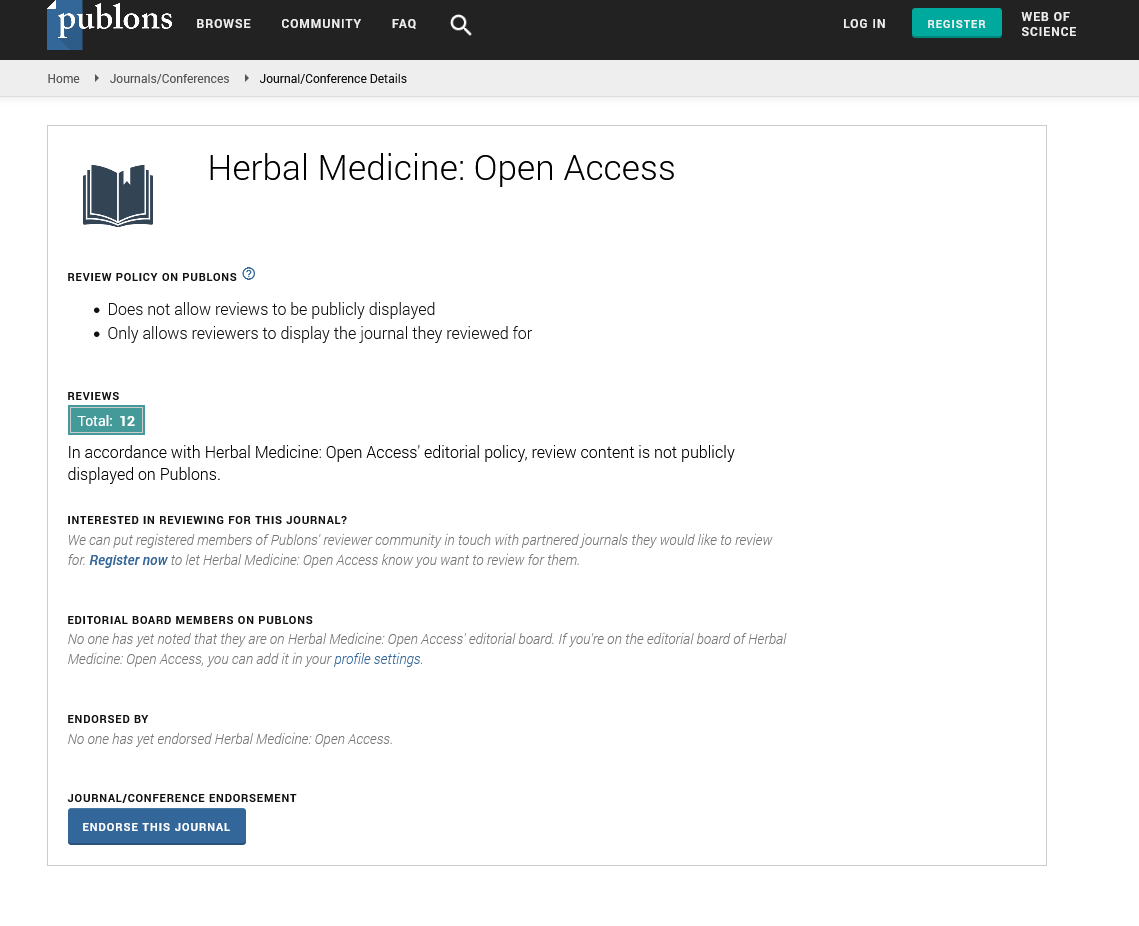Abstract
In Vitro Antimicrobial Activity of Conyza bonariensis and Tribulus terrestris Growing in Tanzania
Objective: The aim of this study was to evaluate antimicrobial activity of Conyza bonariensis and Tribulus terrestris growing in Tanzania. Background statement: The improvement of antimicrobial agents has protected and improved human life from fatal diseases since their discovery. The increase in microbial drug resistance demands for new effective drugs of which medicinal plants are a promising source. Methods: Minimum inhibitory concentration (MIC) in 96- well micro dilution was used to determine antimicrobial activity. The method involved loading of 50 μL of Sabouraud’s dextrose broth in each well. Then, 50 μL of plant extract fetched from 100 mg/mL stock solution to form 100 μL. Thereafter, 50 μL of the mixture from the first rows was repeatedly down the columns until the last row where 50 μL were discarded. Subsequently, 50 μl of microbial suspensions was added in each well and incubated at 37°C for 24 hours. In each well, 20 μL of 0.02% Para-iodonitrotetrazolium chloride dye (INT) was added to micro plates in order to distinguish between the wells with live microbes from those with dead microbes. Results: All extracts demonstrated antimicrobial activity to tested bacterial and fungal strains. Seven extracts namely C. bonariensis leaf chloroform, C. bonariensis leaf ethyl acetate, C. bonariensis stem chloroform, C. bonariensis stem ethyl acetate, C. bonariensis root ethyl acetate, T. terrestris leaf ethyl acetate and T. terrestris root ethyl acetate inhibited Staphylococcus aureus, Pseudomonas aeruginosa, Salmonella typhimurium, Salmonella typhi and Cryptococcus neoformans at 0.78125 mg/mL. Plant extracts demonstrated synergistic effect of their chemical components against the tested microbes. The strongest bactericidal and fungicidal of combined extracts was exhibited on E. coli and C. neoformans respectively. The extracts from C. albicans and T. terrestris revealed antimicrobial activity against seven tested microbes. Conclusion: It was concluded that C. bonariensis and T. terrestris can be considered as possible sources of antimicrobial drug leads upon further phytochemical investigations.
Author(s):
Ambrose Antony Kiang’u Ghwanga and Musa Chacha
Abstract | Full-Text | PDF
Share this

Google scholar citation report
Citations : 271
Herbal Medicine: Open Access received 271 citations as per google scholar report
Herbal Medicine: Open Access peer review process verified at publons
Abstracted/Indexed in
- Google Scholar
- JournalTOCs
- China National Knowledge Infrastructure (CNKI)
- Directory of Research Journal Indexing (DRJI)
- WorldCat
- Publons
- Secret Search Engine Labs
- Zenodo
Open Access Journals
- Aquaculture & Veterinary Science
- Chemistry & Chemical Sciences
- Clinical Sciences
- Engineering
- General Science
- Genetics & Molecular Biology
- Health Care & Nursing
- Immunology & Microbiology
- Materials Science
- Mathematics & Physics
- Medical Sciences
- Neurology & Psychiatry
- Oncology & Cancer Science
- Pharmaceutical Sciences


